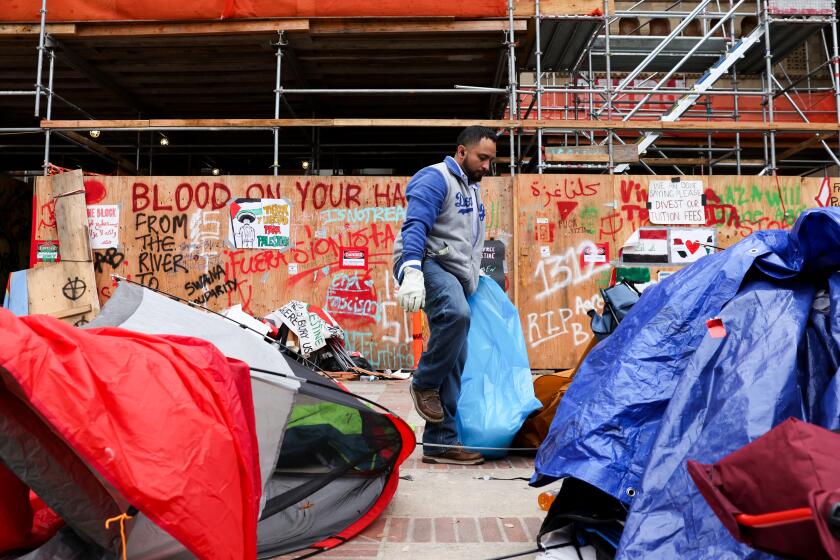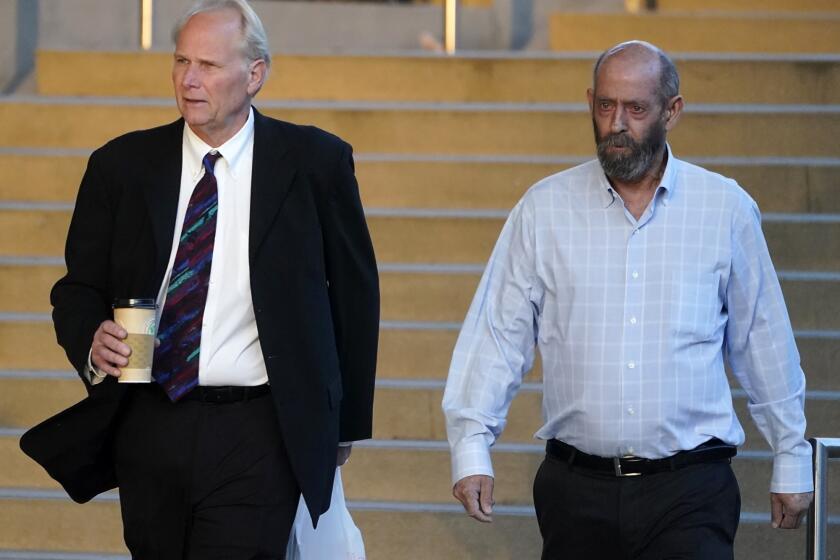Teen Curfew in San Diego Upheld : Courts: ACLU calls law unconstitutional, plans to appeal. Mayor says crackdown reduces juvenile crime.
A federal judge Monday upheld San Diego’s nighttime curfew for teenagers, one of the strictest and most vigorously enforced curfews in the nation.
Judge Marilyn L. Huff ruled that an ordinance that, with few exceptions, orders teenagers off the streets at 10 p.m. is constitutional. The curfew had been on the books since 1947 but was sporadically enforced until the City Council ordered it applied rigorously two years ago as a way to fight crime.
The ACLU had challenged the ordinance on grounds that it would prohibit teenagers from going to a midnight Mass or a late-night political rally and that compared to curfews around the nation the San Diego curfew was heavy-handed and archaic.
Mayor Susan Golding hailed Huff’s ruling as “great news for San Diego” and said the curfew crackdown has helped San Diego reduce juvenile crime while it is increasing in other cities.
Huff ruled that the city has a legal right to impose ordinances meant to “promote the moral, social and physical welfare of minors” by keeping them off the streets. The issues of whether 11 p.m. would be a more reasonable hour or whether more exceptions should be made are political questions, not legal ones, Huff said.
The American Civil Liberties Union will appeal, despite the chance that if upheld by higher courts the San Diego curfew could lead other cities to impose even stricter rules on teenagers.
“It’s a risk,” said ACLU staff counsel Jordan C. Budd. “But it’s one we have to take because we believe the ordinance as vigorously enforced is unconstitutional.”
The curfew allows teenagers to be out after 10 p.m. only if they are working, attending a school-sponsored activity, being supervised by a parent or going directly home. Although there is dispute about how it is enforced, the ordinance says teenagers can be arrested only if they are loitering, playing, strolling or idling.
“Does a reasonable person think it’s all right [for teenagers] to be out after 10 p.m., having nothing to do?” Huff asked. “No.”
In 1994, the U.S. Supreme Court upheld the curfew ordinance in Dallas. That ordinance, however, is more lenient than the San Diego ordinance.
The Dallas curfew is set at 11 p.m. It applies only to youths under 17; San Diego’s includes 17-year-olds. And it has a “1st Amendment exception” allowing teens to be out after curfew if they are engaged in any activity that is considered an expression of freedom of speech.
In ordering the crackdown, the San Diego City Council declined to add such an exception to the 1947 ordinance. The council did, however, add a provision that all teens caught in the curfew net must be fingerprinted and photographed by police, a rarity among curfew ordinances.
Unlike San Diego, many cities with curfews allow a later hour for weekends or make a distinction between 16- and 17-year-olds and younger teenagers. San Diego also enforces its ordinance more vigorously than most cities.
Before the council ordered the crackdown, police averaged only a few hundred curfew arrests a year. The figure is now 3,500 and rising.
Teens arrested for curfew violations are taken to the police station and their parents are summoned. In cases of repeat offenders, both the teenager and parent can be fined and sent to a five-hour behavior-modification class.
James Chapin, deputy city attorney, said that getting a call from police late at night “encourages parents to become involved in controlling their children during curfew hours.”
More to Read
Start your day right
Sign up for Essential California for news, features and recommendations from the L.A. Times and beyond in your inbox six days a week.
You may occasionally receive promotional content from the Los Angeles Times.






